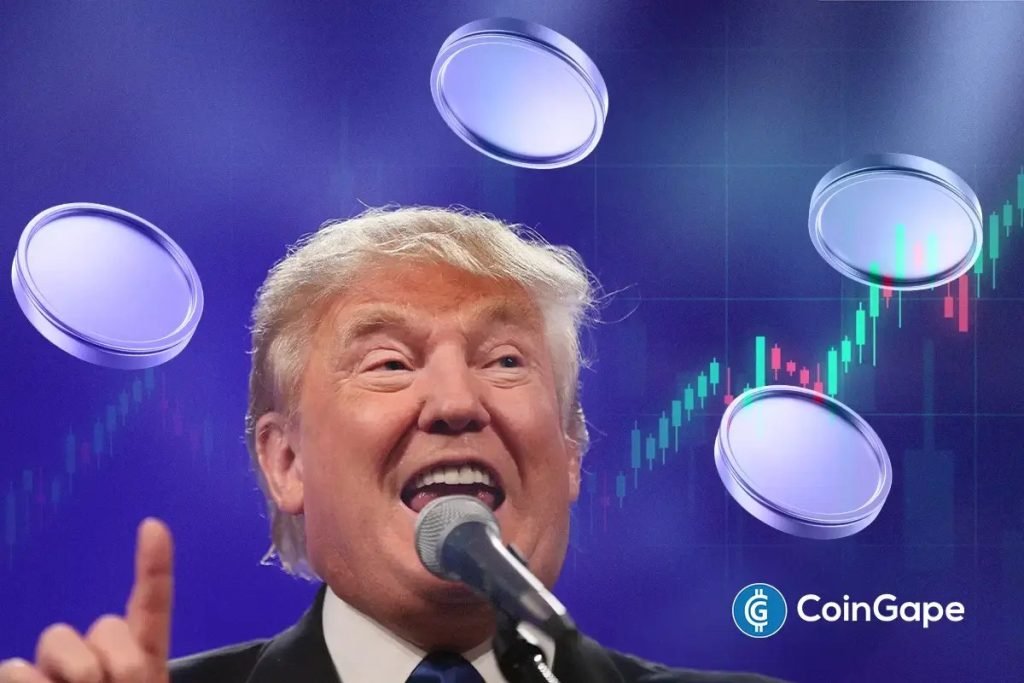Bitcoin Price Trends Amid Tariff Implementation: An In-Depth Analysis
In the ever-evolving landscape of cryptocurrencies, Bitcoin (BTC) is currently experiencing a surprising rally. As the broader financial market braces itself for the implementation of reciprocal tariffs initiated by former President Donald Trump, Bitcoin’s recent price adjustments may reflect the short-term market sentiments. However, the long-term implications of these tariffs on Bitcoin’s price remain uncertain, as the cryptocurrency often reacts to macroeconomic shifts in unpredictable ways.
Understanding the Trump Administration’s Tariffs
Under Donald Trump’s administration, the imposition of reciprocal tariffs became a pivotal economic strategy. This maneuver aimed to balance trade relations by matching tariffs imposed on U.S. goods by other nations. As a result, key economies, including Canada, Mexico, China, and the European Union, now find themselves compelled to respond with their own tariff measures. With trade tensions escalating, early signs of friction are noticeable in stock market indices like the S&P 500, which has seen declines of over 2% in recent trading sessions. Such widespread market anxiety could have ripple effects across various financial assets, including Bitcoin.
Current Bitcoin Price Movements
At the time of writing, Bitcoin has rallied by 3.44%, reaching approximately $85,186.47, according to CoinMarketCap data. Interestingly, over the past week, Bitcoin’s price has also experienced a 2.79% decline, highlighting the cryptocurrency’s inherent volatility. Since Trump’s inauguration, Bitcoin’s price dynamics have oscillated between highs and lows, notably reaching an all-time high of $109,114 in January. Despite this peak, the subsequent drop of over 20% indicates that external economic pressures, especially from the ongoing trade wars, are creating a significant impact on BTC valuations.
Anticipating Future Bitcoin Adjustments
The interplay between the tariff-driven economic climate and Bitcoin’s price movements suggests that further volatility may be on the horizon. With the likelihood of increased inflation due to these tariffs, the Federal Reserve might reconsider its interest rate policies. If rates are lowered to stimulate economic activity, it could potentially create a conducive environment for heightened Bitcoin adoption. Such a scenario may pave the way for a future price surge as institutional investors and retail buyers revisit the asset class amidst changing financial policies.
Factors Influencing Bitcoin Valuation
As we navigate through April, the cryptocurrency market remains rife with uncertainty amid ongoing trade disputes. However, a few key tailwinds may positively influence Bitcoin’s market valuation in the near term. Notably, the U.S. government’s interest in establishing a strategic Bitcoin reserve could signal a shift toward greater institutional adoption of cryptocurrencies. Furthermore, the influx of institutional investments into Bitcoin is generating substantial demand, which may help bolster BTC prices despite the prevailing volatility.
Expert Opinions and Buying Recommendations
In light of recent market trends, leading advocates in the cryptocurrency space are suggesting that now might be an opportune time for investors to accumulate Bitcoin, anticipating a rebound in its price. While the broader economic environment remains fraught with uncertainty, many analysts believe that the long-term outlook for Bitcoin remains strong, driven by its established role as a hedge against economic instability and inflationary pressures.
In conclusion, the relationship between Bitcoin’s price movements and macroeconomic factors, particularly President Trump’s tariffs, illustrates the complexity of cryptocurrency market dynamics. As investors assess these developments, the ongoing interplay between trade policies, inflation, and Bitcoin valuation will be crucial to understanding the future trajectory of this leading digital asset.


